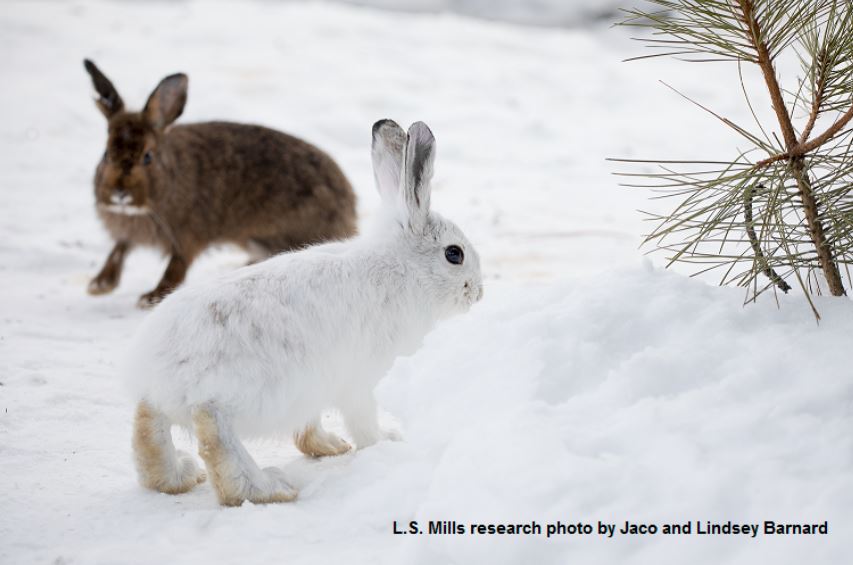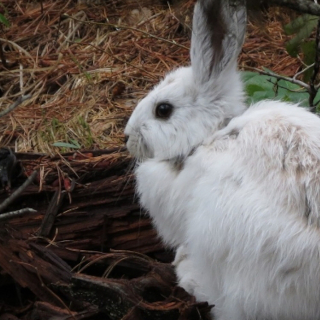Mills Lab publishes new article in Science: Research reveals the genomic basis of polymorphic winter coat colors for snowshoe hares

We are thrilled to announce another high-profile paper by our team studying seasonal coat color and adaptation to climate change. This paper, "Adaptive introgression underlies polymorphic seasonal camouflage in snowshoe hares," led by PhD student Matt Jones (whose advisor is Jeff Good) here at University of Montana, was published in Science on June 22, 2018.
The Jones et al. paper reveals the genomic basis of polymorphic winter coat colors for snowshoe hares, underscoring several important threads from our global polymorphism / evolutionary rescue paper published in Science three months ago. The samples analyzed with a variety of genomic approaches originated from monomorphic winter white snowshoe hares that we’ve been long studying in Montana, from winter brown populations in coastal British Columbia, and from polymorphic populations (where roughly half individuals show each winter color morph) that we’ve been working in for several years. Our captive hares (from both our winter white Montana study area and the known polymorphic region in Washington/Oregon) are also heroes in this story, facilitating both diagnostic determination of the basis of the color polymorphism as a single-gene, Mendelian-inherited trait, and that winter white coats develop through increased expression of the Agouti gene during the Autumn molt.
Here’s the key findings of this new paper: The polymorphic populations are not merely admixtures arising from immigration from monomorphic winter brown and winter white populations, but rather are shaped by local selection (‘primary intergradation’). Second, winter coat color is a single gene trait, with the winter white allele dominant and winter brown expressed as a homozygous recessive. Further, the color polymorphism did not arise from a recent de novo mutation. So where did it come from? Based on the snowshoe hare landscape genetic analyses several years ago of my former Phd student Ellen Cheng, we detected historic mitochondrial introgression in snowshoe hares from black-tailed jackrabbits in a U.S. pacific coastal region with winter brown hares; because black-tailed jackrabbits are the only hare species in North America that remains winter brown throughout its range, we speculated in these papers that perhaps the adaptive winter brown coat in snowshoe hares had arisen through this adaptive hybridization. The Jones et al paper resoundingly supports this idea. Further, it explicitly links the introgression with local adaptation, demonstrating a selective sweep on the winter brown allele approximately 3,000 to 10,000 years ago following the retreat of the Cordilleran ice sheet. Thus, there is every reason to think that in the future under the right conditions, recurrent introgression of adaptive brown genotypes could facilitate rapid evolutionary rescue.
Overall, this paper provides key support for our previous assertions of polymorphic zones as hotspots for evolutionary rescue across species ranges in the face of climate change. Winter coat color phenotypes are maintained by strong local selection, and the simple single-gene basis of winter coat color means that adaptive changes in winter coat color could be fostered to proceed rapidly and be spread by recurrent introgression.
Congratulations to everyone on the team for this great work!
Dr. L. Scott Mills
